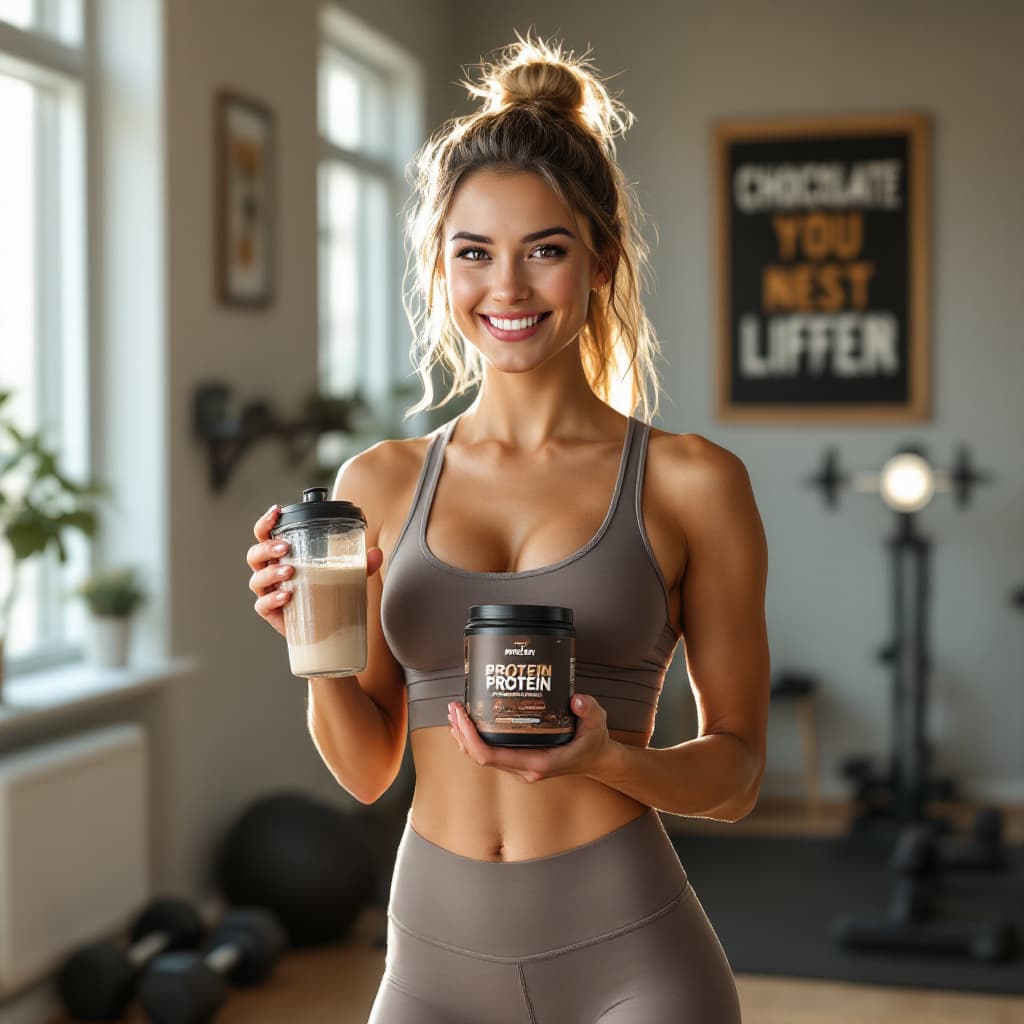Tired of diets that leave you hungry and unfocused by midafternoon? You are not alone. Constant hunger makes weight loss harder than it needs to be, and it often leads to late-day snacking that stalls progress.
Protein powder can make weight loss feel steadier. Protein helps you feel full, it steadies appetite, and it protects lean muscle while you eat fewer calories. When you keep muscle, your metabolism stays more stable, which helps you burn more across the day.
A simple shake can give you a reliable, portion-controlled meal or snack. You get a clear protein target in one step, often 20 to 30 grams per serving, with minimal prep. That structure reduces guesswork, trims cravings, and keeps you on track.
This guide breaks down protein powder for weight loss in plain terms. You will see how protein supports satiety and muscle, which types make sense for your body and budget, and what to avoid on labels. You will get practical tips on timing, portion size, and easy mix-ins, plus a sample routine you can start today.
If you want a plan that cuts hunger, supports training, and fits a busy day, you are in the right place. You will discover how to use protein powder with meals you already enjoy, not as a strict diet, and how to adjust it to your goals. Let’s get you set up to see steady, real results.
How Protein Powder Aids Your Weight Loss Journey
Protein powder can support fat loss without leaving you hungry or weak. It helps you eat fewer calories by keeping you full, it raises calorie burn slightly through digestion, and it protects lean muscle while you lose weight. You get structure, steady energy, and a clean way to hit your protein target.
Here is how protein powder weight loss works in practice:
- Fullness: Protein steadies appetite and reduces snacking.
- Thermogenesis: Your body burns more calories digesting protein.
- Muscle support: Adequate protein preserves muscle during a deficit.
Studies show higher protein diets improve satiety and keep resting metabolism higher compared with lower protein plans. A shake after a workout also supports recovery so you can train well and stay consistent.
Boosting Satiety to Curb Your Cravings
Protein helps control appetite hormones. It lowers ghrelin (your hunger signal) and supports leptin sensitivity (your fullness cue). That combination helps you feel satisfied with fewer calories. Many people notice longer gaps between meals and fewer cravings in the late afternoon when protein intake is steady.
You can use shakes to replace high-calorie snacks that do not fill you up. A 25 to 30 gram protein shake usually comes in under 200 calories, which beats a 400-calorie pastry or candy bar.
Try these simple steps:
- Drink a shake at the time you usually snack.
- Blend with ice and berries for volume and fiber.
- Add a teaspoon of peanut butter if you need staying power.
- Sip slowly and wait 10 minutes before deciding on more food.
The goal is not to skip meals. It is to use a high-protein option that turns off gnawing hunger and makes a calorie deficit feel manageable day to day.
Preserving Muscle While Shedding Pounds
When you cut calories, your body can break down muscle for energy. Protein gives your muscles the amino acids they need for repair and maintenance. Think of muscle like the frame of a house. A solid frame supports everything else. If you protect it, the structure stands strong while you remodel the inside.
More muscle also means a higher resting metabolism. Muscle tissue burns more calories at rest than fat tissue. Keeping it helps you maintain a better daily burn, which supports steady fat loss.
Practical tips:
- Aim for 0.7 to 1.0 grams of protein per pound of goal body weight.
- Use a shake after training to support recovery.
- Spread protein across 3 to 4 meals to maximize repair.
- Pair protein with resistance training for the best outcome.
This approach helps you lose fat, not strength, so you look and feel firmer as the scale moves down.
Choosing the Best Protein Powder for Weight Loss: Whey vs. Plant-Based
You have two strong paths for protein powder weight loss. Whey suits fast recovery and muscle support when you train hard. Plant-based blends fit dairy-free, vegan, or sensitive stomachs. Pick based on your body, your schedule, and how you feel after a shake.
Why Whey Protein Shines for Quick Results
Whey is a complete protein with all essential amino acids, rich in leucine, which triggers muscle repair. It digests quickly, so it is ideal right after workouts when your muscles are primed. Research in active adults often shows whey supports slightly greater fat loss with better lean mass retention compared with other options, especially when training is consistent.
Try simple flavors like vanilla or chocolate if you want a smoother blend with water or milk. Unflavored works well in coffee or oats. Use whey post-gym or as your first meal after morning training.
Pros:
- Fast absorption that suits recovery windows
- Complete amino profile with high leucine
- Smooth texture and easy mixing
Cons:
- Contains dairy, which may cause bloating for some
- Not suitable for vegans
- Can be higher in lactose unless you choose isolate
Pick a whey isolate with 20 to 30 grams protein per scoop, under 3 grams sugar, and minimal gums.
Plant-Based Powders: A Gentle Path to Weight Loss
Pea, rice, and hemp proteins offer a steady, gut-friendly option. Pea is high in lysine, rice is lighter on taste, and hemp brings omega-3 ALA and fiber. On their own, some are not complete, but pea plus rice creates a full amino profile that rivals whey. Many notice less bloating and smoother digestion, which helps you stay consistent during a calorie deficit.
Pros:
- Dairy-free and vegan friendly
- Often includes fiber that supports gut health
- Gentle on digestion for many people
- Lower environmental impact (briefly, smaller resource use)
Cons:
- Texture can be grittier
- Flavor may be earthy
- Sometimes lower in leucine unless blended
Look for blends with 20 to 30 grams protein, under 3 grams sugar, added enzymes for digestion, and clear amino breakdown. For protein powder weight loss, choose unsweetened or lightly sweetened options and pair with water, almond milk, or blended berries for volume without extra calories.
Smart Ways to Incorporate Protein Powder into Your Diet
Protein powder weight loss works best when you keep it simple. Start with one daily shake, then adjust based on hunger and training. Use a measured scoop, pair it with water or low-cal milk, and choose mix-ins that do not spike calories.
- Portion: 20 to 30 grams protein per serving.
- Calories: Aim for 150 to 250 per shake.
- Avoid: Fruit juice, large spoonfuls of nut butter, and sugary syrups.
Timing Your Shakes for Maximum Impact
Timing supports appetite control and recovery. In the morning, a shake helps you hit protein early and steadies energy. This anchors your day and reduces midmorning grazing. After workouts, protein supports repair, which protects muscle during a calorie deficit. Use whey or a pea-rice blend for 25 grams of protein. In the evening, a slow, small shake can curb snacking. Mix with water or unsweetened almond milk to keep calories low.
Simple plan:
- Morning shake if breakfast is rushed.
- Post-workout shake within two hours of training.
- Evening mini-shake if you snack at night.
Easy Recipes to Keep Things Tasty
You can keep flavor high and calories in check with a few staples. Measure your scoop, blend with low-cal liquids, and add fiber for fullness.
- Berry Ice Smoothie: 1 scoop vanilla protein, 1 cup frozen mixed berries, 1 cup unsweetened almond milk, ice, water as needed. About 200 calories. High in fiber, bright flavor.
- Protein Oats: 1/2 cup oats cooked in water, stir in 1/2 scoop unflavored or vanilla protein off heat, add cinnamon and a few berries. About 250 calories. Warm, filling, and steady.
- Cottage Cheese Blender Bowl: 1/2 cup low-fat cottage cheese, 1/2 scoop chocolate protein, 1 tbsp cocoa, splash of almond milk. Blend until thick. About 200 calories. Dessert feel without the sugar hit.
Tips:
- Use water or almond milk, not juice.
- Keep nut butter to 1 teaspoon if needed.
- Add spinach or chia for fiber without many calories.
Conclusion
Best protein powder weight loss works because it solves daily problems, hunger, low energy, and muscle loss in a deficit. You get steady appetite control, a clear protein target, and support for lean mass so your metabolism stays higher. Whey fits fast recovery and training days. Plant-based blends, like pea plus rice, suit dairy-free needs and gentler digestion.
Keep the process simple. Start with one 20 to 30 gram shake, 150 to 250 calories, in the morning, after a workout, or in place of a weak snack. Read labels for low sugar and clean ingredients. Add berries or ice for volume, then keep extras light. Track your progress each week, weight and waist, photos, hunger, energy, and training. If you have a medical condition, take medications, or are pregnant or nursing, talk with your doctor before you begin.
Use protein powder weight loss as a practical tool, not a magic fix. Build meals you enjoy, train with intent, and let protein do quiet work in the background. Start small today, mix a shake, and record how you feel after. Small, repeatable actions add up to lasting results.


CÓ THỂ BẠN QUAN TÂM
Phần mềm quản lý cửa hàng tạp hóa: Tăng hiệu quả kinh doanh vượt trội
🔍 Kích Thước Đèn Âm Trần LED 9W MPE – Bảng Đo Chuẩn Xác Nhất 2025
Protein Powder Weight Loss: Your Clear Guide to Real Results
Trực Tiếp Xổ Số Miền Nam – Kênh Cập Nhật Kết Quả Nhanh Và Chính Xác Nhất Hôm Nay
5 Mẫu Tranh Canvas Cá Chép – Biểu Tượng Tài Lộc Và Thành Công
Đánh giá chi tiết bể nước ngầm inox: Từ đặc điểm đến lợi ích thực tế
Thưởng nạp tiền XM nâng cấp – Đặc quyền chỉ dành cho Trader Việt Nam.
Chi phí sử dụng xe nâng điện là bao nhiêu. Hãng nào uy tín hiện nay